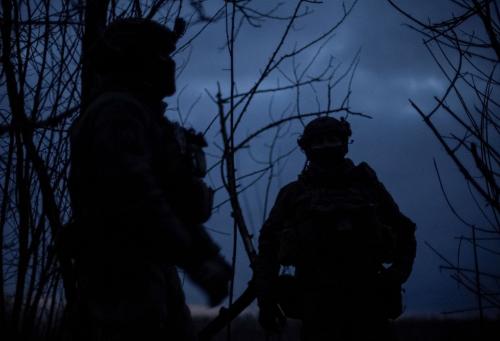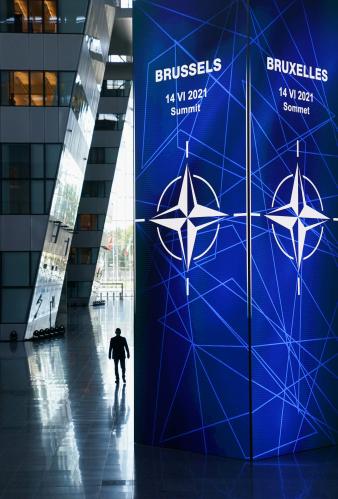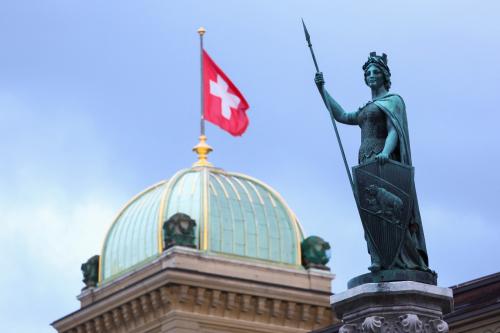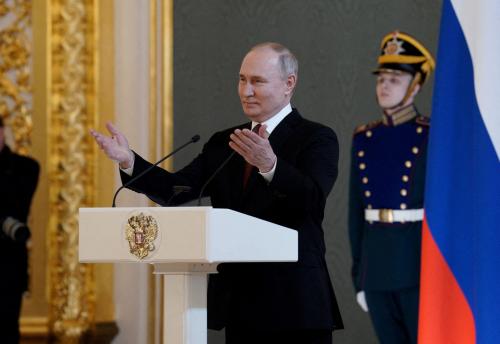The end of Sweden’s drawn-out accession to NATO signifies the completion of the Baltic region’s political transformation and strategic reconfiguration. Both processes were accelerated by Russia’s aggression against Ukraine, which has recently crossed the two-year mark, and in both transitions, Russia loses. The value of Russia’s longstanding economic ties and political influence in the region is lost entirely, and its capacity to project military power there is reduced to an unprecedented minimum. An informal coalition of Northern European and Baltic states committed to countering any and all Russian aggression is in the making, and the Russian army’s offensive capabilities continue to be diminished on the Ukrainian battlefields.
These shifts in European security may appear to make the Northern European political and military leaders’ persistent warnings regarding the need to invest in deterring the Russian threat seem over-cautious and even alarmist. President Vladimir Putin found it opportune to assert that invading Poland or Latvia is “out of the question … because we have no interest in Poland, Latvia or anywhere else.” Putin’s reassurances are anything but convincing, and Western leaders confirmed the urgency of building up defense capabilities at the 2024 Munich Security Conference. Their message is, nevertheless, contradicted by the European public’s diminishing concerns about the Russian threat, and commentators in Moscow are quick to point out this discrepancy. Even deeper disagreements have flared up regarding the possibility of sending combat forces from some NATO states to Ukraine. The question of the real military threat that Russia poses to its neighbors, and its potential timeline, deserves more scrutiny.
Scandinavia’s Zeitenwende: Prudent preparations or undue panicking?
Describing the war in Ukraine as a “stalemate” poorly captures the fast-evolving, high-intensity, multi-domain battles that are occurring, and belies the dire situation the Ukrainian army was facing at the start of 2024, which prompted a stream of strong warnings from Northern Europe’s usually reserved political leaders. Swedish Minister for Civil Defense Carl-Oskar Bohlin first sounded the alarm when he warned at his country’s main annual conference that war could come to Sweden. Swedes and Europeans largely reacted with disbelief and criticism, and Russian propaganda added more scorn, but more official statements and intelligence assessments, including a firm endorsement from NATO Secretary General Jens Stoltenberg, lent credence to Bohlin’s comment. The large-scale Nordic Response 2024 exercise, which constitutes a part of NATO’s Steadfast Defender 2024 strategic exercise, demonstrated that Scandinavia is indeed going through its own Zeitenwende moment.
One particular aspect of this debate that invariably attracts concern is the proposition that Russia could attack a NATO country within three to five years, as suggested, inter alia, by Danish Defense Minister Troels Lund Poulsen. This timeframe might appear unnecessarily short given the Russian army’s huge casualties and the deepening degradation of Russia’s defense-industrial complex. However, what underpins this disturbing Nordic estimate is the supposition that Ukraine might be forced to accept a compromise and sign an unfair peace deal with a victorious Russia, an option advocated by quite a few Western experts. Their arguments emphasize Russia’s “victory” at Avdiivka—costly as it was—and exaggerate Ukraine’s war exhaustion, evidenced by the political quarrels over the new legislation on mobilization and President Volodymyr Zelenskyy’s decision to reshuffle the military leadership.
The “bad peace” option loomed large in early January when the balance of war was tilted heavily in Moscow’s favor, primarily because Western support for Ukraine was paused while the Russian military-industrial complex was operating at peak performance. Since then, however, three significant developments raised Ukraine from the nadir, and two more are in the making. The first was the organization of an “artillery coalition” on the initiative of French President Emmanuel Macron, who correctly recognized the crucial importance of denying Russian superiority in tube and missile artillery. This focus was strengthened by Czech President Petr Pavel’s announcement of a program for purchasing 800,000 artillery shells for Ukraine. The second shift was the European Council’s unanimous approval of a 50-billion-euro (approximately $54.6 billion) aid package to Ukraine for 2024-2027. The third development started with the agreement between Turkey, Bulgaria, and Romania for a joint naval mine-clearing operation securing the maritime corridor to Odesa and continued with a series of Ukrainian hits on the Russian Black Sea Fleet that have effectively denied it access to its bases in Crimea. Ukraine is also set to gain by the end of spring from the combat deployment of several squadrons of F-16 fighters supplied by a coalition of European states led by Denmark and the Netherlands.
Yet important as all these developments are, the major breakthrough would be the U.S. Congress’ long-delayed approval of the $60-billion aid package to Ukraine, which will secure the delivery of urgently needed military hardware, including artillery shells and surface-to-air missiles. This approval cannot be taken for granted, but the effective majority in the House of Representatives remains solid despite the populist recourse with isolationism and so may yet surmount the frustrating technicalities. No amount of European support can compare with this boost to Ukrainian combat capabilities, and no amount of Russian effort at sustaining their offensive after the capture of Avdiivka can prevent U.S. reengagement from turning the tide of the war.
Russia rethinks its Arctic-Baltic geostrategy
Moscow’s decision to maximally concentrate Russia’s military capabilities and economic resources on waging war against Ukraine has left it at a stark disadvantage vis-à-vis the reenergized NATO alliance along the North-Western interface. Moscow used to have superiority of such scale in the Baltic theater that authoritative Western military experts presumed forward positions in Estonia and Latvia to be indefensible and expected a Russian attack across the Suwalki Gap to make a decisive breakthrough. All these forebodings of inevitable defeat have presently become irrelevant, and NATO can confidently plan for defending every inch of Estonian or Lithuanian territory against any offensive grouping that Russia may put together in the immediate future. Expert debates about the effectiveness of the Kaliningrad region’s presumed anti-access/area denial (A2/AD) posture have been resolved by the repeatedly proven inability of the maximum-strength Russian air defenses to protect “Fortress Crimea” from Ukrainian missile and drone strikes.
The Russian high command has recognized that the Baltic theater’s military balance has swung from Russia’s habitual superiority to a deep disadvantage. Already in December 2022, Defense Minister Sergei Shoigu announced a plan to build a new army corps in Karelia, the region on the Finnish border between St. Petersburg and Murmansk. More deployments of troops were supposed to be planned, but the execution of Moscow’s announced response to NATO enlargement has been thwarted by the continual necessity to send every minimally combat-capable unit to the Ukrainian front. In December 2023, Putin decreed an increase of the total strength of the Russian Armed Forces to 1,320,000 troops, but his claims of a steady inflow of volunteers are refuted by the fact that Russia is illegally recruiting in such exotic places as Nepal. Intelligence assessments in such exposed countries as Estonia correctly point to the Russian plans for deploying new units in key strategic directions along the border with NATO, but the implementation of these plans has been postponed until a cease-fire with Ukraine is realized.
One change in the Russian Armed Forces’ organizational structure that reveals a profound change in strategic thinking is Putin’s decree on reconstituting the Moscow and Leningrad (notably not St. Petersburg) military districts. The previous strategic design developed in 2014-2021 was to build an Arctic strategic command on the basis of the Northern Fleet, which was elevated to a separate military district. The underlying assessment in the Russian General Staff was that the Arctic, with the key transport corridor of the Northern Sea Route, constituted an interface with NATO that was significantly different from the Baltic theater. The key difference is that while the Northern Fleet comprises a major part of Russia’s strategic arsenal, the grouping of conventional forces that was supposed to dominate the Baltic region had little need for nuclear weapons. That separation between the Arctic and the Baltic theaters was underpinned by the assumption that Helsinki would remain neutral in any possible conflict—and was proven false by Finland’s shockingly swift accession to NATO.
The newly-restored Leningrad military district is intended to integrate the operations of Russia’s Northern and Baltic Fleets and the ground force groupings along the continuous North-Western interface with NATO, but commanding diverse units in the vast area from the Arctic archipelago of Novaya Zemlya to the Baltic exclave of Kaliningrad will be highly demanding. No new strength can actually be gained from merging the many weaknesses in Russia’s military posture as even the designated Arctic brigade has been repeatedly decimated by fighting in the Donbas.
Russia used to counter every NATO exercise with a show of force, but it has nothing to respond to the ongoing Steadfast Defender 2024 series of exercises, in which the newest U.K. aircraft carrier HMS Prince of Wales is taking part, while the unlucky Russian carrier Admiral Kuznetsov is stuck with long repairs. The Russian Baltic Fleet is experimenting with redeploying its Karakurt-class missile corvettes to Lake Ladoga, east of St. Petersburg, in order to give them a better chance of survival. It has only one old submarine in its combat order, while the Swedish Navy alone has four and two A26 Blekinge-class submarines are under construction. Russian experts abhor the notion of the Baltic Sea as a “NATO lake,” but the extended sea line of communication between St. Petersburg and Kaliningrad cannot be effectively protected, and Estonia’s deployment of Blue Spear anti-ship missiles increases this vulnerability.
Risks inherent to NATO’s new position of strength in the Baltic theater
Russia is acutely uncomfortable with its political isolation and military weakness in the Baltic theater and is actively seeking asymmetric and “hybrid” measures in order to compensate for its disadvantages. The crude hit on the Balticconnector gas pipeline between Finland and Estonia on October 8, 2023, by the anchor of a Chinese-owned container ship could have been a test run for a strategy of sabotaging underwater infrastructure. Many pipelines and cables in the Baltic and North Seas are hard-to-protect targets, while Russia—ruing the loss of the Nord Stream gas pipeline—does not have similar assets anymore. Unfortunately for Moscow, the European Center of Excellence for Countering Hybrid Threats (known as Hybrid CoE) is located in Helsinki, and its research is a step ahead of most mischief prepared by the Russian special services.
The main issue with NATO’s present-day position of strength in the Baltics is that it may unravel quickly—and this is what underpins the emphasis added in allied political planning on a looming kinetic war. Three conditions need to converge for this worst-case scenario to become a certainty. The first is a severe curtailing or even complete interruption of U.S. military aid to Ukraine; the second is a negotiated cessation of hostilities consolidating Russian territorial gains in Ukraine; and the third condition is the sustained expansion of Russia’s defense-industrial complex. NATO’s European member states have little influence on the first and the third of these three developments, so they have to prioritize strengthening Ukraine’s resilience.
This imperative prompted Macron to convene a high-level conference in Paris, just two weeks after the Munich gathering, where he heavily hinted at the possibility of deploying allied forces to Ukraine. Macron’s motives are open to interpretation, but his logic is straightforward: In order to prevent Ukraine’s defeat in the absence of U.S. material support, Europeans have to prepare to potentially send combat forces into the war zone. The alternative is to prepare for a Russian large-scale offensive operation in the Baltic region, which even in the “optimistic” German assessment could come within five to eight years. Most European politicians prefer to be “shocked” by Macron’s provocation. It is noteworthy, however, that China has warned not only against sending French troops to Ukraine but also against “ill-considered plans” for preparing to defend against a probable Russian attack in the near future.
Timing works differently in a long war of attrition rather than in fluid maneuver warfare, but it remains crucial. The deadlock in the U.S. Congress has already cost the Ukrainian forces the loss of fortifications around Avdiivka and may make some further retreats inevitable. Providing that the European “artillery coalition” becomes operational and augments the “F-16 coalition,” which is scheduled to deliver in a couple of months, further Russian offensive operations can be checked. It will, however, take another year for the increased European investments in military industries to yield tangible results. After that, the balance of military hardware will be shifting against Russia’s overworked defense-industrial complex, which has been degraded by tightening sanctions.
This prospect demands huge sacrifices from Ukraine, and Kyiv’s determination to stay in the fight might indeed need to be reinforced by a limited deployment of French, British, or combined European forces performing particular air defense and logistical tasks. Ensuring Russia’s defeat is a long-term goal that requires many increases in the quality of European resolve and solidarity, but the war leaves diminishing space for political choices. Fortunately for Europe, investments in upgrading its own capacity for deterring Russian aggression and expanding military support for Ukraine are essentially the same thing.






Commentary
NATO cannot take Russia’s weakness in the Baltic theater for granted
March 20, 2024